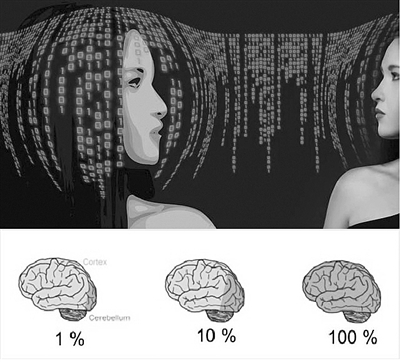Release date: 2018-03-29 The Japan Institute of Physical Chemistry has announced that an international joint research team has successfully developed an algorithm that mimics the human brain's overall neural circuits, which can be applied to next-generation supercomputers. The new algorithm not only saves memory, but also greatly increases the speed of brain simulation on existing supercomputers. Nerve cells are special cells that can send electrical signals for information exchange. There are about 16 billion human brains, about 69 billion cerebellums, and about 86 billion nerve cells in the entire human brain. Nerve cells form a complex network through synaptic connections, but at present, even with the most advanced supercomputers, it is impossible to simulate the electrical signal exchange of nerve cells on the whole scale of the human brain. In order to simulate the brain, you need to create neural cells and synaptic virtual memory in advance. In the simulation, electrical signals from all nerve cells are sent to each compute node and it is determined which electrical signal should be delivered to which nerve cell. In the range of brains that can be simulated, this method is more efficient with current supercomputers. The brains of the next generation of supercomputer simulations are very large. When each computing node receives electrical signals from all nerve cells, the useless electrical signals are large and inefficient, so the simulation of the entire brain neural circuit becomes very difficult. In addition, the next-generation supercomputers use the current method, which also causes problems such as large memory consumption. The new algorithm developed by the research team exchanges information at the beginning of the simulation to determine whether it is necessary to send electrical signals in advance between computing nodes, so that only the electrical signals required by each computing node can be transmitted and received, avoiding transmission. And receiving unwanted signals, but also avoiding the memory to determine whether to send electrical signals to the nerve cells. By these means, even if the size of the neural circuit increases, the amount of memory of each computing node does not increase, thereby saving memory. So far, the supercomputer "King" has been used for brain pathology simulation of Parkinson's disease. In the future, the entire human brain neural circuit will be simulated by the next-generation supercomputer "Kei Jing", in order to clarify the information processing mechanism of motion control and thinking. Source: Technology Daily Low Speed Centrifuge,Glass Centrifuge Tube,Auto Lock Rotor Centrifuge,Digital Hematocrit Centrifuge Guangdong Widinlsa International Co.Ltd , https://www.gdwidinlsa.com